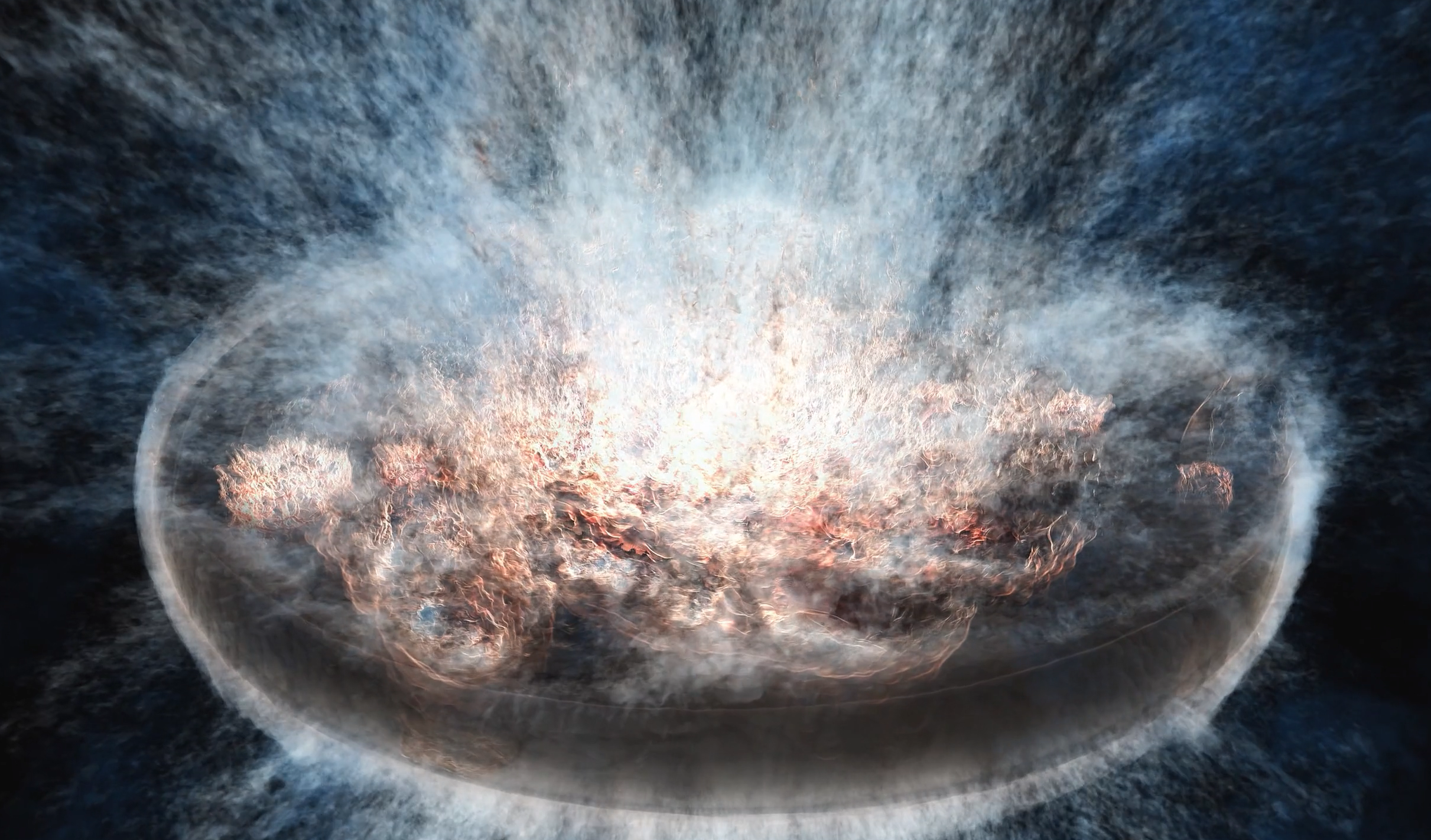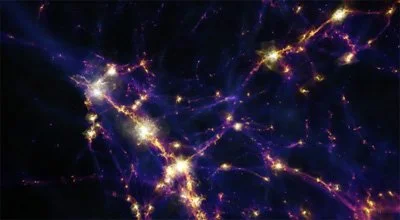
Simulations
Computer simulations of galactic atmospheres help to reveal how galaxies develop over time. This collection of images and videos features some particularly beautiful visualizations of those simulations.
The image above is from a simulation performed by Evan Schneider and collaborators. Supernova explosions from a burst of star formation are propelling an outflow erupting out of a galaxy’s disk.
-

Magnetized Interstellar Gas
Churning gas stirred by exploding stars is amplifying magnetic fields in this simulation of atmospheric gas by Suoqing Ji and collaborators.
-

Galactic Wind
Outflows of gas following the white arrows are emerging from the top and bottom of a star-forming galaxy (yellow) simulated by Dylan Nelson and collaborators.
-

Atmosphere of a Spiral Galaxy
Atmospheric gas falling inward (purple and black) is fueling star formation in the central galaxy (orange and magenta) of this simulation by the FOGGIE collaboration.
Cosmic Magnetic Fields
This video from the IllustrisTNG collaboration shows how magnetic fields develop in the atmospheres around galaxies. Blue and purple regions in between galaxies have weak magnetic fields, and the orange and white regions centered on galaxies have stronger magnetic fields.
-

Early Galaxy Cluster Atmosphere
In this simulation by Josh Borrow and collaborators, energetic photons from young galaxies that will end up in a large cluster of galaxies are ionizing the atmospheric gas surrounding them.
-

Magnetized Convecting Gas
Magnetic fields can alter the convection patterns of hot, buoyant gas in the atmosphere of a galaxy cluster. This simulation by Mike McCourt and collaborators shows an example of that process in action.
Galactic Wind Fly-through
Rapid star formation in a galaxy’s disk can drive a wind that flows out the top and bottom of the disk. This video flies through a galactic wind simulated by Evan Schneider and collaborators, showing the details of its structure.

